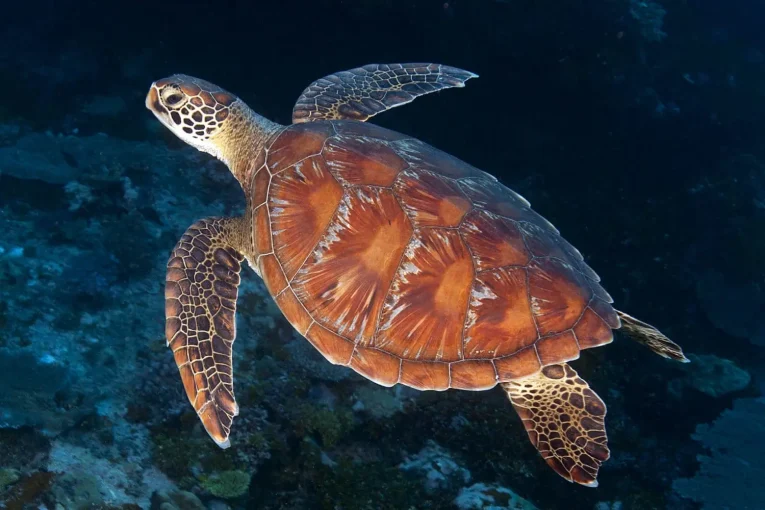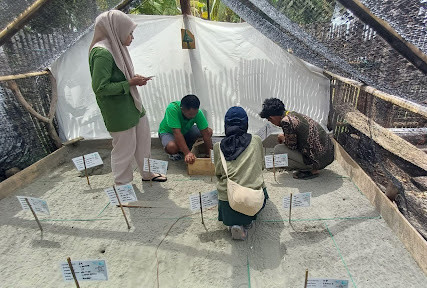
At the western tip of West Sulawesi, the UGM community service program (KKN-PPM) team of Arung Campalagian has developed an Internet of Things (IoT)-based prototype to monitor nest temperatures for sea turtle conservation at Ba’batoa Beach, Lapeo Village, Campalagian District, Polewali Mandar Regency.
The student team, consisting of Rizal Kurniawan Saputra (Electrical Engineering), Salma Nur Jihan (Internet Engineering Technology), and Wahyudi Maulana (Engineering Physics), designed the tool called “Online Hatchery.”
The device uses an ESP32 microcontroller as its control unit and integrates two main sensors: the DHT22 to measure air temperature around the nest and the DS18B20, embedded in the sand, to directly monitor nest temperatures.
According to Rizal Saputra, Ba’batoa Beach is an important sea turtle conservation site managed by Laut Biru, a nonprofit organization active in preserving marine ecosystems through turtle conservation, coral reef protection, marine waste management, and mangrove planting. Laut Biru has recorded a hatching success rate of up to 90 percent.
“However, challenges arise because most hatchlings are female, as the warmer sand temperature, around 28–30°C, tends to produce females. Male hatchlings, on the other hand, are formed at lower temperatures, between 26–28°C,” Saputra explained in an interview on Tuesday (Aug. 19).

Busdar, a conservationist from Laut Biru, noted that they previously lacked equipment to accurately and continuously monitor nest sand temperatures.
“This is the first tool available for us to carry out monitoring. Previously, we only used devices brought by visiting researchers. If no researchers came, then no tools were available,” Busdar said.
Through this device, Saputra explained, nest temperature data can be monitored online, enabling Laut Biru to take preventive measures, such as adjusting shade or humidity, to balance the sex ratio of hatchlings.
“There was even a question whether this could be applied to conservation sites in Kalimantan, and this is certainly possible, provided there is internet access if remote monitoring is to be maintained,” Saputra added.
With this innovation, the Arung Campalagian team hopes that sea turtle conservation at Ba’batoa Beach will not only maintain a high hatching success rate but also ensure a balanced population of males and females for the species’ sustainability in the future.
Author: Lintang Andwyna
Editor: Gusti Grehenson
Photographs: Lautsehat.id and KKN-PPM UGM Arung Campalagian Team

